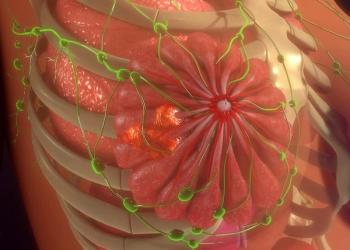
Darolutamide Remains Well-Tolerated with Prolonged Treatment Among Patients with nmCRPC
Darolutamide still has a favorable safety profile with prolonged treatment among patients with nonmetastatic castration-resistant prostate cancer.
The androgen receptor inhibitor (ARI) darolutamide remains well-tolerated, even with prolonged treatment, among patients with nonmetastatic castration-resistant prostate cancer (nmCRPC), according to a final analysis of the double-blind period of the ARAMIS trial (NCT02200614) presented at the 2021 ASCO Genitourinary Cancers Symposium.
In a presentation on the safety profile of darolutamide, lead author Matthew Raymond Smith, MD, PhD, of the Massachusetts General Hospital Cancer Center, noted that no new safety signals were observed during the double-blind, open-label period of treatment.
“Darolutamide remained well-tolerated with longer exposure in patients with nmCRPC,” Smith said.
ARAMIS randomized 1509 patients with nmCRPC 2:1 to 600 mg darolutamide twice daily (n = 954) or matched placebo (n= 554), while also continuing androgen deprivation therapy. Primary analysis of the DB period data cut-off was September 3, 2018, and after study unblinding on November 30, 2018, 48.8% of patients in the darolutamide arm who were still receiving study treatment continued with open-label darolutamide by the final cut-off date for analysis of the double-blind, open-label period on November 15, 2019.
The median treatment duration in the darolutamide group was 18.5 months for the double-blind period and 25.8 months for the double-blind, open-label period.
In ARAMIS, darolutamide was found to significantly reduce the risk of death by 31% (HR = 0.69; 95% CI: 0.53-0.88; P = .003) and prolonged median metastasis-free survival compared to placebo (40.4 months vs 18.4 months; HR = 0.41; 95% CI: 0.34-0.50; P < .001).
With ARI therapy, however, patient daily life can be impacted by adverse events (AEs) that typically include fatigue, falls, fractures, rash, mental impairment and hypertension, as well as drug interactions between ARIs and concomitantly administered drugs. This analysis examined the safety profile of the drug, and found it to be well-tolerated, with a 2% or less difference in most AEs of interest compared to placebo at the end of the double-blind period.
Additionally, at the data cut-off for final analysis of the double-blind, open-label period, the incidence of permanent discontinuation due to AEs in the darolutamide arm increased slightly from 8.9% during the double-blind period to 10.5% during the double-blind, open-label period, while discontinuation in the placebo group during the double-blind period was 8.7%. The only AE with an incidence greater than 10% with darolutamide was fatigue.
Researchers found the increase in the incidence of any-grade AEs (85.7% vs 89.8%) and serious AEs (26.1% vs 32.1%) to be small when comparing the double-blind and double-blind, open-label periods.
When the incidences were adjusted for exposure, minimal differences between the double-blind and double-blind, open-label period were found. In one example, researchers noted that the rate of bone fractures was 3.4 (double-blind) versus 4.0 (double-blind, open-label) per 100 patient-years.
As Smith concluded, darolutamide was found to be well-tolerated, even with prolonged treatment. “For adverse events of interest, the expected increases in incidence between the darolutamide [double-blind] and extended [double-blind, open-label] periods largely disappeared when adjusted for longer exposure to darolutamide,” Smith said.
“These results confirm the favorable safety profile of darolutamide with prolonged treatment.”
Reference:
Smith M, Fizazi K, Tammela T, et al. Safety of darolutamide (DARO) for nonmetastatic castration-resistant prostate cancer (nmCRPC) from extended follow-up in the phase III ARAMIS trial. Presented at: 2021 ASCO Genitourinary Cancers Symposium. Abstract 239.
Newsletter
Stay up to date on recent advances in the multidisciplinary approach to cancer.

















































































